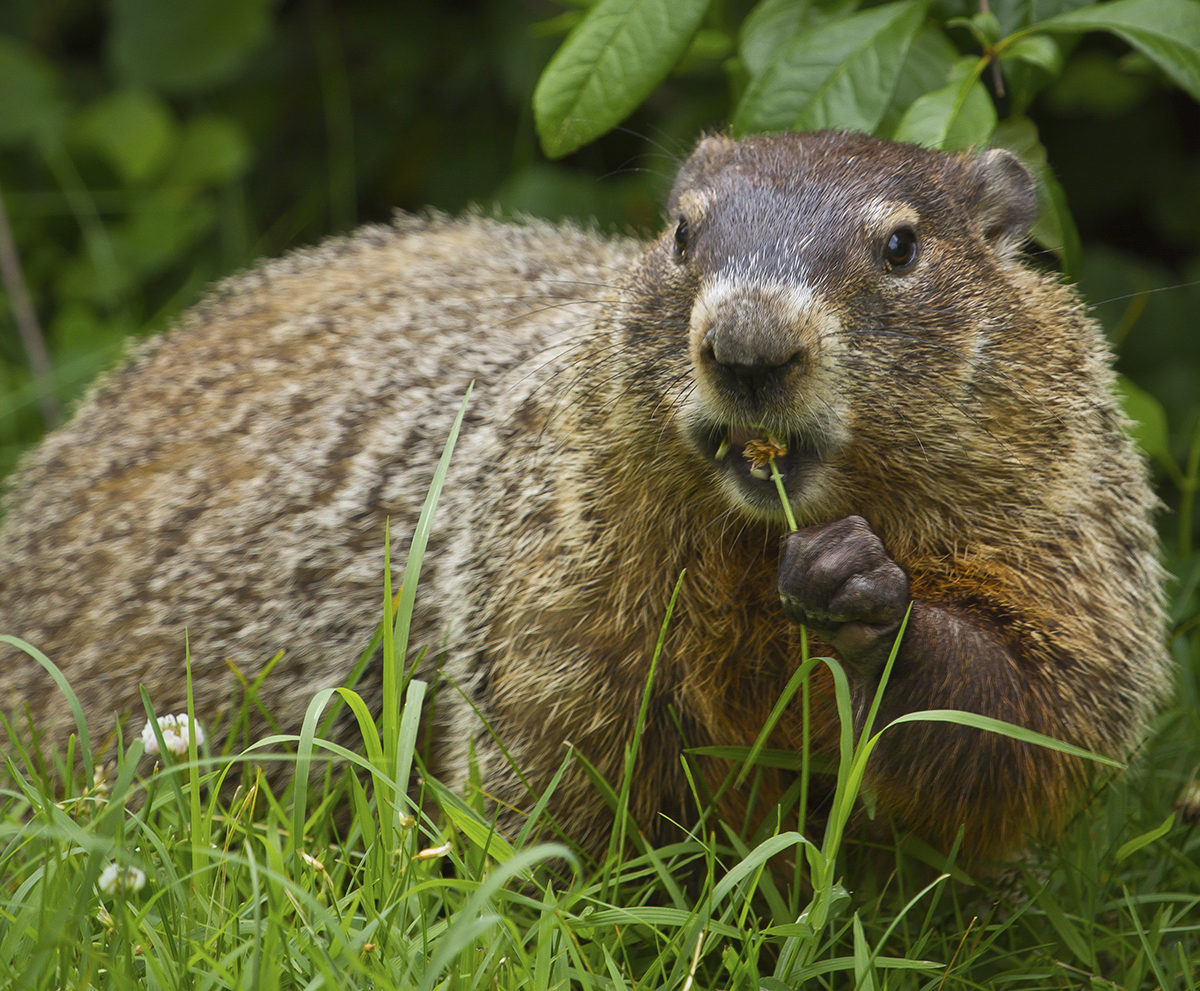
By Dennis Ferraro, Professor of Practice – Conservation Biologist/Herpetologist and Community Engagement Coordinator
Groundhogs (Marmota monax), also known as woodchucks, can be sighted throughout the eastern half of Nebraska. Groundhogs are brownish with a grizzled appearance, reaching a length of 16–20 inches and an average weight of 7–10 pounds. The groundhog has a short, wide head, very small ears and a short fluffy tail. This short-legged, heavy-bodied animal is sometimes referred to as a land beaver. Actually, the woodchuck is closely related to the ground squirrel.
Groundhogs typically live in burrows at the edges of woodlands rather than in open grasslands. They prefer to dig their holes in slopes or banks. Groundhog burrows normally have two entrances — a main hole, identified by a large accumulation of soil around it, and a second entrance, often hidden by vegetation. Holes and dirt mounds from groundhogs can be hazardous for horses, motorcycles and farm equipment. Groundhogs sun themselves near the main entrance of their burrow and hunt for food in daylight. They may wander 100–200 feet away from their burrows.
Groundhogs feed primarily on native grasses and forbs (flowering plants), cultivated alfalfa and clover. In urbanized and suburban locations, these animals will eat sweet corn, squash, root crops, cucumbers and peas. A foraging family of groundhogs can clear a small vegetable garden in less than a week. Gardens close to wooded or sheltered areas are more likely to be attacked than a small garden in an open area.
Fencing can help keep groundhogs off the property, but the fence must be strong, about 4 feet tall and buried to a depth of at least 1 foot. Trapping is the best alternative for managing this animal when it becomes a pest. Before you attempt any controls, decide if the situation warrants management of the animal. If the animal is in a location which isn’t going to disturb property or cause erosion, consider leaving them alone.
The only legal way to manage groundhogs in Nebraska is to trap them. Poison baits are not registered for control of groundhogs in Nebraska. To trap groundhogs, get a square cage trap and place it right near the hole. Cover the live trap with burlap and wire the trap open. Bait options for groundhogs include cucumber, zucchini or apple. Bait the trap and let the animals take the bait for a day or two before putting in fresh bait and unwiring the trap.
If you catch a groundhog in your trap, remember it is against regulations in the State of Nebraska to translocate a groundhog. If you are going to release it live, you have to release it within one hundred yards of the original point of capture. The animal may or may not come back. To discourage the groundhog from coming back after you’ve removed it from the burrow, pack the hole with gravel and cover with soil. If you can find the groundhog’s second hole, the escape hole, you can pack that hole with gravel and cover with soil as well.
FOR MORE INFORMATION
Nebraska Extension’s wildlife website has a short video on Controlling Woodchucks, as well as numerous resources on a wide variety of wildlife at http://wildlife.unl.edu